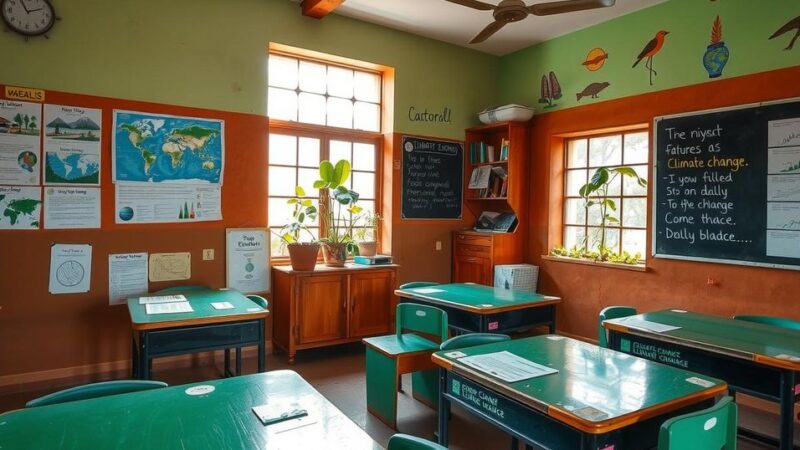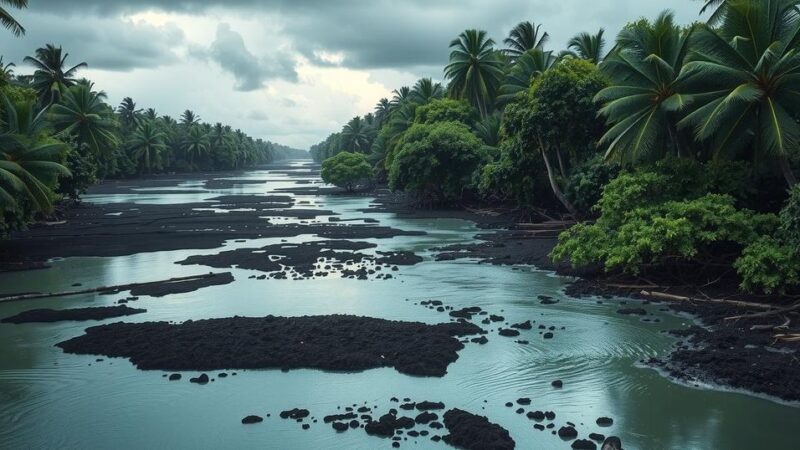A report by OECD warns that droughts could cost Paris region up to €2.5 billion by century’s end. Climate change is projected to worsen water scarcity, impacting agriculture and industry, necessitating improved water management strategies.
A recent report from the Organisation for Economic Cooperation and Development (OECD) indicates that severe droughts could inflict up to €2.5 billion in economic damages on Paris and its surrounding Île-de-France region by the end of the century. Currently, the French capital has not yet experienced the extreme water shortages that other cities, such as Barcelona and Cape Town, have faced, but climate projections predict deteriorating conditions after 2050.
The report asserts that major droughts may “gravely disrupt economic activity” within the Île-de-France region, significantly impacting agriculture and manufacturing sectors. Jo Tyndall, director of the OECD Environment Directorate, indicated that the existing infrastructure might not suffice to manage future drought conditions.
Historically viewed as water-rich due to ample reservoirs and groundwater, the Île-de-France has experienced an average temperature rise of 2°C since 1990, thereby heightening the risk of severe droughts. The report forecasts that, in the next 25 years, climate change could lead to conditions akin to those in Mediterranean regions, previously marked by drought and substantial agricultural losses.
As climate change alters rainfall patterns and depletes soil moisture, the region grows increasingly vulnerable. Sophie Lavaud, the report’s lead author, highlighted the reliance on the system of four major reservoir lakes to meet water demands, although this has bred complacency regarding future risk management.
The Île-de-France region supports 19 percent of France’s population and generates one-third of the national economy while allocating half its land for agriculture. Agricultural water demands have more than doubled since 2012, projected to increase by 45 percent by 2050, amid rising usage from cooling systems that utilize water from the Seine River.
Currently, 57 percent of water withdrawals cater to public supply, with the remaining divided among industry, energy production, canals, and irrigation. A drought resembling the 1921 crisis would necessitate water usage restrictions across various sectors for over 150 days to ensure drinking water availability.
The OECD’s analysis categorizes potential €2.5 billion economic losses, with immediate damages from restricted industrial production and diminished crop yields surpassing two-thirds of the total projection. Manufacturing and agricultural sectors would bear the largest losses.
The report emphasizes the importance of understanding water use, including seasonal variations and their implications for water availability. Recommended preventative actions aim to enhance drought resilience, and authorities must rethink water allocation strategies proactively instead of reacting post-crisis.
Structural challenges are also addressed, as clay soils contracting during droughts may compromise the integrity of Paris’s built environment. The OECD advocates for a comprehensive re-evaluation of water infrastructure and resource allocation, but the discussion regarding funding remains unresolved. Without substantial investment now, the region’s resilience may be substantially tested by future droughts.
The OECD report reveals significant economic risks associated with severe droughts affecting the Paris region, projecting potential damages up to €2.5 billion. It highlights the urgent need for improved water management and infrastructure adjustments to meet the challenges posed by climate change. Proactive strategies are essential to mitigate future impacts, emphasizing the importance of understanding water usage patterns and enhancing conservation efforts.
Original Source: www.rfi.fr






